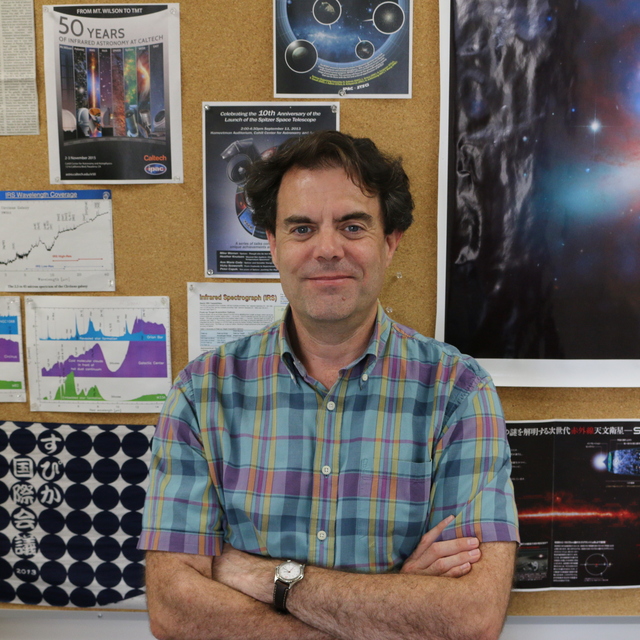November
2022
•
2022ApJ...940...52S
Authors
•
Song, Y.
•
Linden, S. T.
•
Evans, A. S.
•
Barcos-Muñoz, L.
•
Murphy, E. J.
•
Momjian, E.
•
Díaz-Santos, T.
•
Larson, K. L.
•
Privon, G. C.
•
Huang, X.
•
Armus, L.
•
Mazzarella, J. M.
•
U, V.
•
Inami, H.
•
Charmandaris, V.
•
Ricci, C.
•
Emig, K. L.
•
McKinney, J.
•
Yoon, I.
•
Kunneriath, D.
•
Lai, T. S. -Y.
•
Rodas-Quito, E. E.
•
Saravia, A.
•
Gao, T.
•
Meynardie, W.
•
Sanders, D. B.
Abstract
•
We present the analysis of ~100 pc scale compact radio continuum sources detected in 63 local (ultra)luminous infrared galaxies (U/LIRGs; L IR ≥ 1011 L ⊙), using FWHM ≲ 0.″1-0.″2 resolution 15 and 33 GHz observations with the Karl G. Jansky Very Large Array. We identify a total of 133 compact radio sources with effective radii of 8-170 pc, which are classified into four main categories-"AGN" (active galactic nuclei), "AGN/SBnuc" (AGN-starburst composite nucleus), "SBnuc" (starburst nucleus), and "SF" (star-forming clumps)-based on ancillary data sets and the literature. We find that "AGN" and "AGN/SBnuc" more frequently occur in late-stage mergers and have up to 3 dex higher 33 GHz luminosities and surface densities compared with "SBnuc" and "SF," which may be attributed to extreme nuclear starburst and/or AGN activity in the former. Star formation rates (SFRs) and surface densities (ΣSFR) are measured for "SF" and "SBnuc" using both the total 33 GHz continuum emission (SFR ~ 0.14-13 M ⊙ yr-1, ΣSFR ~ 13-1600 M ⊙ yr-1 kpc-2) and the thermal free-free emission from H II regions (median SFRth ~ 0.4 M ⊙ yr-1, ${{\rm{\Sigma }}}_{{\mathrm{SFR}}_{\mathrm{th}}}\sim 44\,{M}_{\odot }$ yr-1 kpc-2). These values are 1-2 dex higher than those measured for similar-sized clumps in nearby normal (non-U/LIRGs). The latter also have a much flatter median 15-33 GHz spectral index (~-0.08) compared with "SBnuc" and "SF" (~-0.46), which may reflect higher nonthermal contribution from supernovae and/or interstellar medium densities in local U/LIRGs that directly result from and/or lead to their extreme star-forming activities on 100 pc scales.
Links




